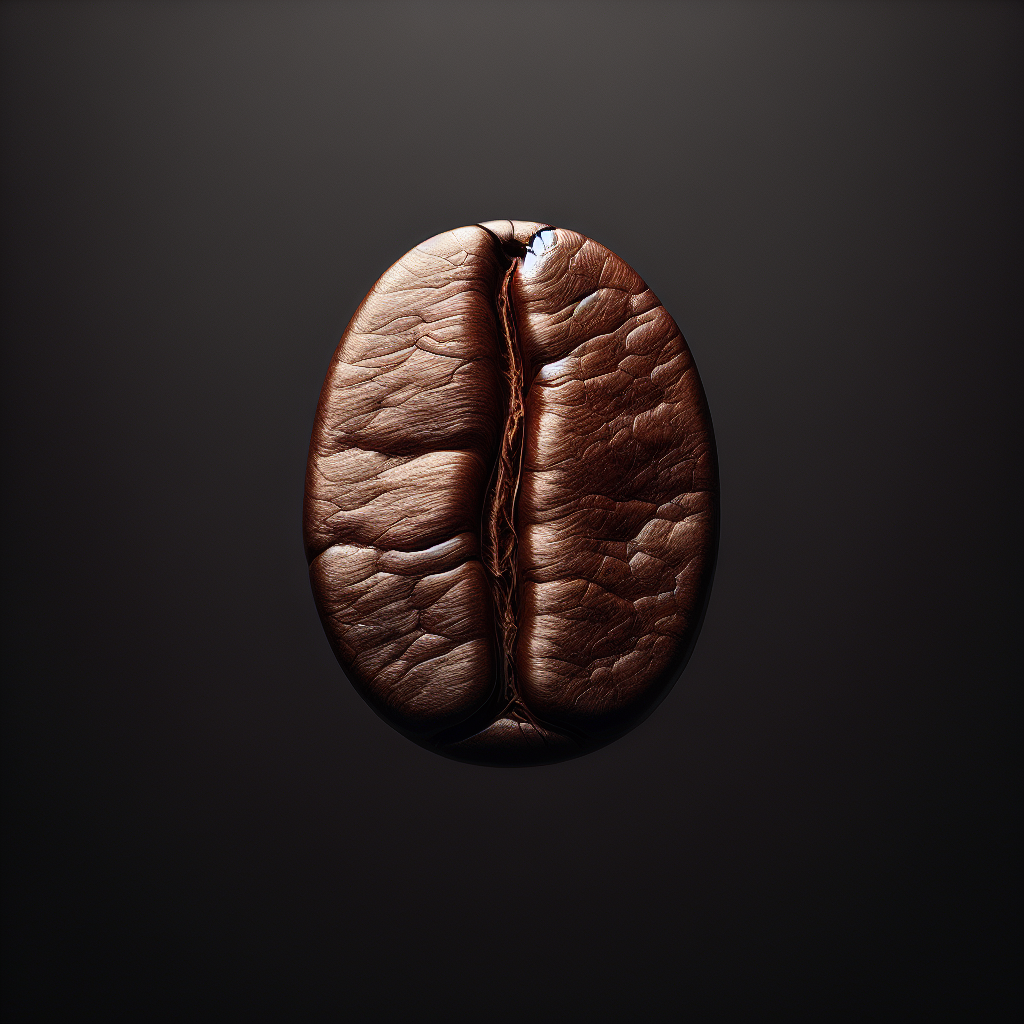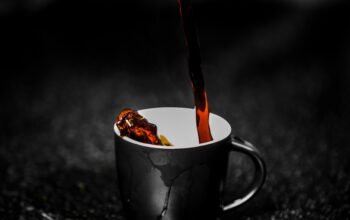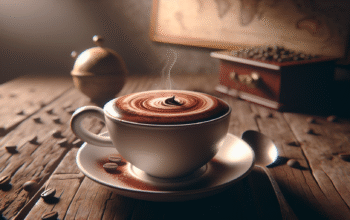Whether you’re a coffee connoisseur or simply looking to expand your java knowledge, understanding the different types of coffee is essential. From a bold and robust espresso to a creamy and indulgent latte, each coffee type offers a unique taste and experience. In this article, we will explore the various types of coffee, from classic favorites to trendy newcomers, giving you the lowdown on their flavors, origins, and the best ways to enjoy them. So grab your favorite mug and get ready to embark on a delightful coffee-tasting adventure.
Arabica Coffee
Arabica coffee is one of the most widely consumed and popular coffee varieties in the world. It originates from the highlands of Ethiopia, specifically from the regions of Harar, Sidamo, and Yirgacheffe. Arabica coffee is known for its delicate and nuanced flavors, making it a favorite among coffee connoisseurs.
Origin
Arabica coffee has its origins in the ancient coffee forests of Ethiopia. The coffee plant was first cultivated in the 7th century and quickly spread throughout the Arab world, giving it its name. Today, Arabica coffee is grown in various countries, including Brazil, Colombia, Ethiopia, and Costa Rica, among others.
Flavor Profile
Arabica coffee is renowned for its complex and diverse flavor profile. It offers a wide range of flavors, including fruity, floral, and nutty notes. The taste can vary depending on factors such as growing conditions, altitude, and processing methods. Generally, Arabica coffee is known for its smoothness, acidity, and subtle sweetness.
Growing and Processing
Arabica coffee thrives in higher altitudes, typically between 2,000 and 6,000 feet above sea level. The plants require specific conditions, including mild temperatures, rich soil, and well-distributed rainfall. The beans are hand-picked when ripe and undergo a meticulous processing method that involves pulping, fermentation, washing, and sun-drying.
Popular Varieties
There are numerous popular Arabica coffee varieties available in the market. Some of the most well-known ones include Colombian, Ethiopian Yirgacheffe, Costa Rican Tarrazu, Brazilian Santos, and Jamaican Blue Mountain. Each variety offers a unique flavor profile, allowing coffee enthusiasts to explore different tastes and aromas.
Robusta Coffee
Robusta coffee, as the name suggests, is known for its robust and bold flavors. It is the second most widely consumed coffee variety, after Arabica. Robusta coffee beans contain more caffeine than Arabica beans and are often used in blends or to provide an extra kick to espresso.
Origin
Robusta coffee originates from the lowland regions of Central and Western Africa. It was first discovered in the Congo region and is now cultivated in various countries, including Vietnam, Brazil, India, and Uganda.
Flavor Profile
Robusta coffee is characterized by its strong and bitter flavor profile. It is known for its earthy, woody, and sometimes even nutty notes. The higher caffeine content contributes to its bold taste and gives it a distinct “kick” that many coffee lovers appreciate.
Growing and Processing
Robusta coffee plants are hardier and more resistant to diseases and pests compared to Arabica plants. They thrive in lower altitudes, often below 2,000 feet above sea level. The beans are typically picked by machines and undergo a simpler processing method compared to Arabica. The beans are dried in the sun or by mechanical dryers.
Popular Varieties
Some popular Robusta coffee varieties include Vietnamese Robusta, Indian Monsoon Malabar, and Brazilian Santos. These varieties are often used in espresso blends to provide a strong and rich flavor.
Liberica Coffee
Liberica coffee is a lesser-known coffee variety that offers a unique sensory experience. It is characterized by its distinct flavor and aroma, making it sought after by coffee enthusiasts looking for something different.
Origin
Liberica coffee originated in Liberia, West Africa. It was introduced to the Philippines in the late 1800s due to the devastating effects of coffee rust disease on Arabica crops. Today, the Philippines is one of the main producers of Liberica coffee.
Flavor Profile
Liberica coffee is known for its bold and smoky flavor profile. It offers a full-bodied taste with notes of dark chocolate, tobacco, and sometimes fruity undertones. The aroma is often described as intense and unique.
Growing and Processing
Liberica coffee plants require specific growing conditions, such as high humidity and warmer temperatures. They are generally grown in the Philippines, where they are well-suited to the climate. The processing methods for Liberica coffee are similar to those for Arabica and Robusta, including pulping, fermentation, washing, and drying.
Popular Varieties
Liberica coffee is not as widely available as Arabica or Robusta, but some popular varieties include Kapeng Barako from the Philippines and Liberica Java from Indonesia. These varieties offer coffee enthusiasts a chance to explore a distinctive taste experience.
Excelsa Coffee
Excelsa coffee is a unique and rare coffee variety that offers a different flavor profile compared to the more common Arabica and Robusta varieties. It adds diversity to the world of coffee and provides coffee lovers with a new and exciting taste experience.
Origin
Excelsa coffee originates from Southeast Asia, specifically Vietnam. It is often considered a part of the Liberica family but is sometimes categorized as a separate variety. Vietnam is the main producer of Excelsa coffee, with its favorable climate and growing conditions.
Flavor Profile
Excelsa coffee is known for its complex and intriguing flavor profile. It offers a balance between fruity and earthy flavors, with hints of tartness and a unique floral note. The taste can be described as bold and distinct, making it an excellent choice for those seeking a different coffee experience.
Growing and Processing
Excelsa coffee plants thrive in the highlands of Vietnam, where they benefit from the combination of cool temperatures and rich volcanic soil. The beans are hand-picked when ripe and undergo a similar processing method to Arabica and Robusta, including pulping, fermentation, washing, and drying.
Popular Varieties
Excelsa coffee is less widely known and available compared to other coffee varieties, but its popularity is steadily increasing. Some popular Excelsa coffee varieties include Vietnamese Excelsa and Excelsa Blend. These varieties offer coffee enthusiasts the opportunity to explore a new and exciting flavor.
Blend Coffee
Blend coffee refers to the combination of different coffee beans to create a unique and balanced flavor profile. It allows coffee enthusiasts to enjoy the best characteristics of multiple coffee varieties in a single cup.
Definition
Blend coffee is created by mixing two or more types of coffee beans. The beans can be from different regions, varieties, or processing methods. Blending allows for the creation of a specific flavor profile desired by the coffee roaster or consumer.
Advantages
There are several advantages to blending coffee. Firstly, it allows for the creation of a more complex and balanced flavor profile. Each type of coffee bean contributes its own unique characteristics, resulting in a harmonious taste. Blending also offers more consistency in flavor, as it helps to mitigate variations that may occur in single-origin coffees. Additionally, blending can help create a desired aroma and body, enhancing the overall sensory experience.
Popular Blends
There are countless coffee blends available, each with its own unique combination of coffee beans. Some popular blends include Mocha Java, which combines Yemeni Mocha and Indonesian Java, and Breakfast Blend, which typically includes lighter roasted beans from various origins. Other well-known blends include French Roast, Italian Roast, and Colombian Supremo. Each blend offers a different flavor experience, catering to various preferences and taste profiles.
Espresso
Espresso is a concentrated form of coffee that is brewed using high pressure and finely ground coffee beans. It is the base for many popular coffee drinks and is loved for its intense flavor and rich body.
Definition
Espresso is a brewing method that involves forcing hot water through finely ground coffee under high pressure. The result is a concentrated and flavorful shot of coffee, typically served in a small cup or glass.
Preparation
To make espresso, you will need an espresso machine equipped with a portafilter and a fine coffee grinder. The coffee beans should be ground to a fine consistency, similar to table salt. The portafilter is then filled with the ground coffee and tamped down to ensure an even extraction. The machine forces hot water through the coffee at high pressure, resulting in a concentrated and aromatic shot of espresso.
Flavor Notes
Espresso is known for its intense, complex, and full-bodied flavor. It offers a range of flavor notes, including chocolate, caramel, nuts, and sometimes even fruity or floral undertones. The flavor profile can vary depending on the type of coffee beans used, the roast level, and the brewing parameters.
Popular Variations
Espresso serves as the base for many popular coffee beverages. Some variations include:
- Caffè Americano: An espresso shot diluted with hot water, resulting in a milder taste.
- Cappuccino: A combination of equal parts espresso, steamed milk, and milk foam, topped with a sprinkle of cocoa or cinnamon.
- Macchiato: An espresso shot “stained” with a small amount of milk foam.
- Latte: A combination of espresso and steamed milk, often topped with a thin layer of foam.
- Mocha: A blend of espresso, chocolate syrup, steamed milk, and topped with whipped cream.
These variations allow you to enjoy the rich flavors of espresso in different ways, catering to various taste preferences.
Cappuccino
Cappuccino is a popular Italian coffee beverage that combines espresso, steamed milk, and milk foam. It is loved for its creamy texture and balanced flavors.
Definition
Cappuccino is a coffee drink made from equal parts espresso, steamed milk, and milk foam. It is typically served in a small cup or glass and is loved for its creamy texture and distinctive layers.
Preparation
To make a cappuccino, you will need an espresso machine, milk, and a milk frother. Start by brewing a shot of espresso and steaming the milk. The milk should be heated until it reaches a velvety consistency and has a slight froth. Pour the steamed milk into the espresso, holding back the foam with a spoon. Finish by spooning the foam on top of the cup, creating distinct layers.
Ingredients
The main ingredients in a cappuccino are espresso, steamed milk, and milk foam. The espresso provides the base for the drink, while the steamed milk adds richness and enhances the flavor. The milk foam adds a creamy texture and helps create the signature layering effect.
History
Cappuccino has its roots in Italy, where it was first introduced in the 17th century. The name “cappuccino” is derived from the Italian word “cappuccio,” which means hood or hooded cloak, referring to the distinctive layer of milk foam on top of the drink. Over the years, cappuccino has gained popularity worldwide and has become a staple in coffee shops and cafes.
Latte
Latte is a popular coffee beverage made by combining espresso and steamed milk. It is loved for its smooth and creamy texture, making it a comforting and indulgent treat.
Definition
Latte, short for caffè latte, is a coffee drink made by combining espresso and steamed milk. It is typically served in a glass or cup and is known for its creamy texture and the layer of milk on top.
Preparation
To prepare a latte, start by brewing a shot of espresso using an espresso machine. Steam the milk, creating a velvety texture and some froth. Pour the steamed milk into the espresso, holding back the foam with a spoon. Finish by spooning the foam on top of the cup, creating a layer of milk foam.
Ingredients
The main ingredients in a latte are espresso and steamed milk. The espresso provides the base for the drink, while the steamed milk adds a creamy texture and richness. Some variations may include flavored syrups or toppings such as caramel, vanilla, or chocolate.
Flavor Variations
Latte allows for a wide range of flavor variations, making it a versatile and customizable drink. Some popular variations include:
- Vanilla Latte: A latte flavored with vanilla syrup or vanilla extract.
- Caramel Latte: A latte with caramel syrup or caramel sauce added for a sweet and indulgent taste.
- Hazelnut Latte: A latte flavored with hazelnut syrup or hazelnut extract, offering a nutty and aromatic twist.
These flavor variations allow you to personalize your latte and enjoy different taste experiences.
Macchiato
Macchiato is a coffee beverage with a strong espresso base, topped with a dollop of milk foam. It is loved for its intensity and the contrasting layers of flavors.
Definition
Macchiato, which means “stained” or “marked” in Italian, refers to a coffee drink made with a shot of espresso and a small amount of milk foam. It is served in a small cup or glass and is known for its bold taste and distinct layers.
Preparation
To prepare a macchiato, start by brewing a shot of espresso using an espresso machine. Steam a small amount of milk, creating a thick and velvety texture. Pour the steamed milk into the espresso, holding back the foam with a spoon. Finish by spooning a dollop of foam on top of the cup, leaving a visible “mark” on the surface.
Types
Macchiato comes in two main variations:
- Espresso Macchiato: Also known as a “short macchiato,” this variation consists of a shot of espresso “stained” with a small amount of milk foam.
- Latte Macchiato: This variation features a shot of espresso topped with a generous amount of steamed milk and a small dollop of foam.
The espresso macchiato offers a stronger and bolder flavor, while the latte macchiato provides a more balanced and creamy taste.
Serving
Macchiato is typically served in a small cup or glass to highlight the distinct layers and enticing aromas. The small size allows its intense flavor to be enjoyed without dilution. It is often enjoyed as a morning or afternoon pick-me-up or as a complement to a sweet treat.
Americano
Americano is a coffee beverage made by diluting espresso with hot water. It is loved for its milder taste and is often enjoyed as an alternative to drip coffee.
Definition
Americano is a coffee drink made by adding hot water to a shot of espresso. It is typically served in a larger cup or mug and offers a milder taste compared to a straight espresso shot.
Preparation
To prepare an Americano, start by brewing a shot of espresso using an espresso machine. Then, add hot water to the espresso, usually at a 1:1 or 1:2 ratio, depending on personal preference. Adjust the amount of water to achieve the desired strength and flavor.
History
The Americano has its roots in World War II, when American soldiers stationed in Italy found the local espresso too strong for their taste. To make it more palatable, they started adding hot water, creating a milder alternative. This gave rise to the name “Americano” as it represented the American soldiers’ preference for a less intense coffee.
Serving Suggestions
Americano can be enjoyed plain or customized to taste. Some popular additions include milk, cream, sugar, or flavored syrups. It is often served as a morning beverage or as an afternoon pick-me-up, offering a satisfying and flavorful cup of coffee without the intensity of a straight espresso shot.
In conclusion, the world of coffee offers a diverse range of flavors and experiences, from the delicate and nuanced Arabica to the bold and robust Robusta, as well as the unique profiles of Liberica and Excelsa. Blends allow for a combination of these flavors, while the brewing methods of espresso, cappuccino, latte, macchiato, and Americano provide various ways to enjoy the rich and aromatic qualities of coffee. Whether you prefer the intense and concentrated flavors of a shot of espresso or the creamy and indulgent experience of a latte, there is a coffee beverage suited to every coffee lover’s taste. So grab your favorite cup and savor the world of coffee, one sip at a time.



